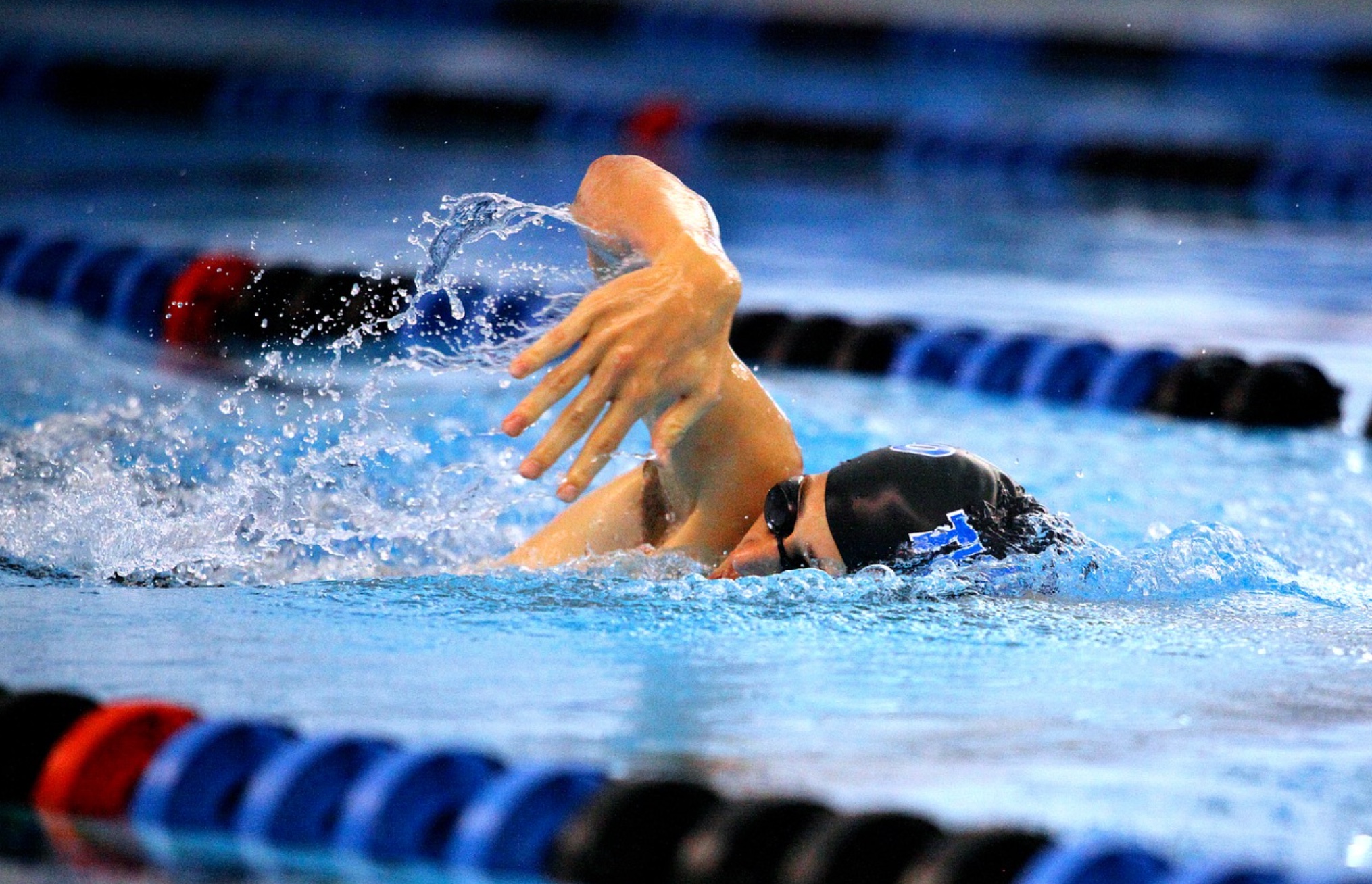That swimming isn’t necessarily a relaxing sport, is no surprise to triathletes Because nobody relaxes when swimming a hard set with, for instance, 10 x 100 meters efforts. But what should feel relaxed, are your neck and shoulders. Yet, many people suffer from a painful neck or stiff shoulders after a swim session. The latter could simply be a result of a hard practice and swimming with paddles, but neck pain should never be part of the “after burn”. That’s why we have three tips for you to avoid neck pain from swimming.
Position in the water
Firstly, it’s important to have a closer look at your position in the water. There are two completely different theories on how your head should be positioned while swimming. While the one theory says you should look ahead, the other theory says it’s better to look down at the bottom of the pool. There is however no hard evidence that proves one of these two head positions is better, and that’s why you should probably just find out what works best for you.
It can be useful for triathletes to work on a position in which you look ahead while swimming, because it makes it easier to lift your head up and sight when in open water. The downside is that this position can put a strain on your neck, as you constantly look “up”. With your neck in a more neutral position, you would be looking at the bottom of the pool. If you feel like your neck problems are caused by your position, as you “force” yourself to look ahead, it may be better for you to join the group of people that look down. Besides it being a little less convenient for sighting in open water, it shouldn’t make much of a difference for your hydrodynamics.
Stretch exercises to release tension in neck and shoulders
There are many stretch exercises you can do to release tension in your neck and shoulders. If you’re bothered by a stiff neck, you’ll likely benefit from some stretching before and after swimming. Think of exercises like slowly rolling your shoulders forward and backward, but also stretching by looking over your shoulder to the left and right as far as you can, and tilting your head by moving your ear to your shoulder.
One good exercise that will help you stretch one of the muscles between your neck and shoulders, is the following: move your chin to your chest as you try to look at one of your armpits, while doing this use your arm – from the side of the armpit you’re looking at – to gently pull your head down. If you do this right, you’ll feel a good stretch. Hold the stretch for 10-15 seconds and repeat three times per side. The following image will help you understand the exersise.
Text continues below picture
To make your neck feel relaxed again, finish it off with some simple rotation exercises, like looking down, rotating left, looking up and then right. Repeat these circles slowly a few times, both clockwise and anti-clockwise.
Strength training for a stronger upper body
Another reason for stiff shoulders and a painful neck could be that you’re not well-trained enough, strength wise. Some strength exercises could sort you out. Don’t exaggerate it, though, because that could only worsen your problems. Some strength exercises that you can do are the Lat Pull Down or Push-Ups. You can also train your neck muscles by holding a weight in both hands – keeping them next to your body – and gently lifting your shoulders. Figure out how much weight works well for you, but make sure to gently increase the load and to not start off with weights that are too heavy. You could do three sets of 8 to 12 repeats.


